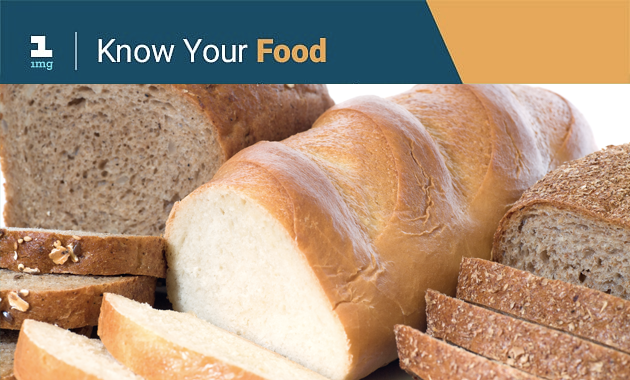
Bread is one of the most favorite breakfast options not just for kids but also for office-goers. Eating a slice or two when getting late to office or packing a sandwich when traveling, it always comes to the rescue.
However, bread is not a wholesome food as it lacks the healthy fibre and is loaded with carbohydrates. Moreover, it contains preservatives and is laden with chemicals which gives it the color and texture. But most people believe that replacing white bread with whole wheat or brown bread is a healthier option as the latter is packed with nutrients. Is it really true?
So to clear the doubt, we asked Ms. Rajeswari Shetty, Head, Dietetics, SL Raheja Hospital, Mumbai if the brown bread is really healthier than white bread. Here is what she has to say.
Brown bread vs white bread: What’s the difference?
The main difference between white bread and brown bread is that the white bread is more processed. White bread contains endosperm, which is loaded with starch and thus, has fewer nutrients. Whereas whole wheat bread and multigrain bread has the germ and bran intact during the processing, which makes it more nutritious than the white bread.
Nutrients in bread
As white bread has to undergo a lot of processing, it fails to retain the healthy nutrients. On the other hand, both whole wheat bread and multigrain bread, which are types of brown bread, undergo less processing and retain most of the naturally available nutrients such as fiber, proteins, vitamins, and minerals. Moreover, multigrain bread contains whole grains such as rye, barley, oats, and buckwheat are added during the processing, thus making it a healthier choice. Hence, brown bread ranks higher in the nutrient profile as compared to white bread.
However, the difference in the nutrient levels is not too significant because of the presence of various additives, chemicals and preservatives added to the bread.
Calories in bread
Most calorie conscious people or people planning to lose weight tend to prefer brown bread over white bread, thinking it is low in calories. However, this is not true. Yes, according to the Indian Council of Medical Research (ICMR)’s Dietary Guidelines for Indians, the approximate calorific value of 2 slices of bread is 170 calories. However, the addition of sugars during the processing or as preservatives in white bread, multigrain bread or whole wheat bread can up the calorific value.
Buy the best weight loss products at 1mg now
Glycemic index (GI) of bread
Glycemic index of a food is a value which helps you to know how the carbohydrate content in the food affects your blood glucose level. So foods which have a GI value of 55 or less are considered to be good for diabetics as it causes the carbohydrates to metabolize slowly and cause a slow release of glucose into the bloodstream.
As per the dietary guidelines for National Institute of Nutrition (NIN), the GI values for white wheat bread and whole wheat bread (brown bread) is 75 (+ 2) and 74 (+ 2) respectively. Hence, it is clearly stated that the there is no difference in the glycemic values and thus, the energy content of white bread and brown bread.
Brown bread vs white bread: which is healthier?
Whether it is brown bread or white bread, to pick a healthier one, here are few things you need to look when reading the label.
– When buying a brown bread or whole wheat bread read how much percentage of whole wheat flour is present in the bread. The higher the percentage, the higher is the nutritional value.
– In India, most types of bread (white, brown, multigrain, whole wheat, etc) contain added preservatives which are known to soften the bread. It is best to avoid bread that is loaded with more preservatives and additives.
– Most bread also contains added sugars (such as corn starch, high fructose corn syrup, etc) which improves the taste. Hence, it is important to read the label before buying any type of bread to look for these sugar alternatives.
– If you want to buy a whole wheat bread, do not go by the look of the packet. Instead, read the label to ensure that the ingredients contain whole wheat flour and not refined flour (maida).
– The color of the bread doesn’t reveal anything about how healthy the bread is. This is because the brown color could be due to caramel or malt which are added during the processing. So check the label for the absence of caramel or malt when buying a brown bread. The same applies to white bread, as white bread is bleached with chemicals during the processing, which gives it a bright color.
Hence, when buying a bread from a local market it is advised to read the nutritional information and label of the bread carefully. Alternatively, you can also make bread at home to ensure that the bread is healthy with no added preservatives and chemicals.
(The article is reviewed by Dr. Lalit Kanodia, General Physician)
Recommended Reads:
Brown Eggs Vs White Eggs: What Is Better For You?
Low Sodium Diet: 5 Simple Tips To Reduce Salt In Food